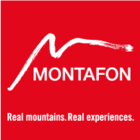This page does not exist,
but the journey of discovery continues!
Sometimes you get lost - not only out in the mountains, but also when exploring our site.
But the great thing is that every detour holds the chance of a new discovery. Perhaps this was precisely the moment to pause, take a deep breath - and move on with curiosity.
Here are some paths that are guaranteed to lead you to your destination:
- To the homepage
- Hiking in the Montafon
- Skiing in the Montafon
- Things to know
- Events
- Book accommodation
Do you have a question or are you looking for something specific? Then please get in touch with us: info@montafon.at
Note: In October 2025, we extensively redesigned and restructured our website. As a result, some content has changed – which might be why the path you just took no longer leads to a destination.

